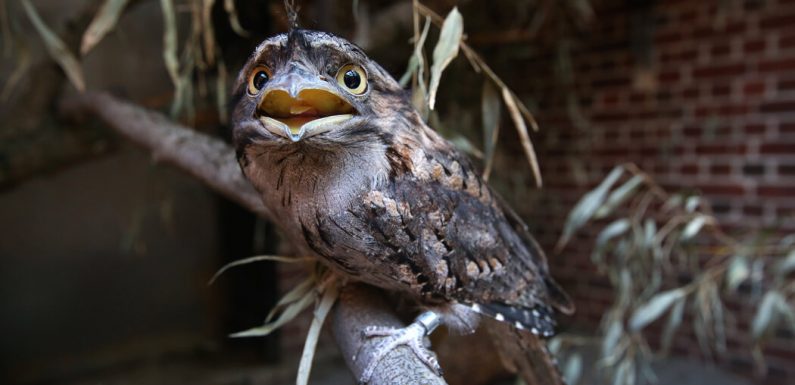
With its broad, hooked beak and wide eyes, the frogmouth — a nocturnal bird that is sometimes mistaken for an owl — is a striking sight.
So much so that it has been crowned the “most Instagrammable bird” by researchers in Germany who examined how social media users interacted with some of the most popular bird photography accounts on Instagram.
The study, released last week, examined more than 27,000 photos of birds across nine Instagram accounts with a combined following of nearly 3.5 million users. It was all in the service, the researchers said, of answering one simple question: “What makes a great bird photo?”
The aesthetic appeal of a photo often has little to do with conventional notions of beauty, according to the study. A bird’s color may motivate users to “like” an Instagram photo — blue and red birds generate more likes than yellow and green ones, the study found. But often the more unique or unusual an animal looks, the more people respond to it, said Katja Thömmes, a postdoctoral researcher at the University Hospital Jena in Germany and one of the authors of the study.
Dr. Thömmes embarked on the study as part of her dissertation at the University of Konstanz. She developed a method she calls the Image Aesthetic Appeal, or I.A.A., score, which uses the liking behavior of Instagram users to gauge what images people find aesthetically pleasing. As an amateur photographer herself and someone who studies aesthetics, Dr. Thömmes said she had always been interested in what makes a good photo.
“I am convinced that part of the human aesthetic experience arises from objective features of the stimulus,” she said by email. “In the visual domain, there are certain colors, shapes and even more fundamental image statistics that appeal to our perception more than others.”
Gregor Hayn-Leichsenring, who wrote the study with Dr. Thömmes, is an avid bird photography enthusiast. After he learned about Dr. Thömmes’s research, he suggested they apply it to try to identify the most photogenic bird on Instagram.
“I thought this method, the I.A.A. score, will be a great tool to investigate bird photographs in terms of aesthetic appeal and inform people which birds are the most photogenic,” said Dr. Hayn-Leichsenring, also a postdoctoral researcher at University Hospital Jena. “Or possibly, I just wondered why nobody likes my own bird photographs.”
Dr. Thömmes explained the I.A.A. method this way: Suppose a photo is liked 12,425 times on Instagram. “That number alone doesn’t have much meaning to it, especially if we want to compare it to another photo,” she said. But by “controlling for reach and time,” she said, “we can for example state that Photo X received 25 percent more likes than the exposure to the audience alone can explain.”
Followers of the National Audubon Society’s Instagram account, which was featured in the study, often respond to colorful species of birds, like owls and hummingbirds, said Preeti Desai, the society’s director of social media and storytelling.
“We’ve always found that close-up portraits of birds resonate the most with our followers,” Ms. Desai said, “but birds engaged in interesting behaviors, whether in photos or videos, showcase unexpected views of bird life that most people don’t see in real life.”
The frogmouth has a knack for blending in with its surroundings because of its plumage coloration, camouflaging as it perches on tree branches. Its name comes from its wide, flattened gape, which can open wide like a puppet’s, making it suitable for catching prey. Mainly located in Southeast Asia and Australia, the frogmouth is a somewhat sedentary bird, said Tim Snyder, the curator of birds at the Brookfield Zoo in Chicago, which currently has three tawny frogmouths in its care.
The tawny frogmouth’s front-facing eyes — most birds’ eyes sit on the sides of their heads — make them more “personable” and “humanlike,” he said.
“They always look perpetually angry,” Mr. Snyder said. “The look on their face just looks like they’re always frustrated or angry with you when they’re looking at you, and that’s just the makeup of the feathers and the way their eyes look and everything. It’s kind of funny.”
Jen Kottyan, the avian collection and conservation manager at the Maryland Zoo in Baltimore, calls it “resting bird face.”
Aside from the frogmouth, other popular birds on Instagram include touracos — fruit-eating birds with striking pigments that are found in Africa — as well as pigeons, magpies and broadbills.
Dr. Thömmes said she did not expect the frogmouth to come out on top when she embarked on the study. Among the 27,000-plus images that she and Dr. Hayn-Leichsenring examined, the frogmouth appeared in only 65, she said.
“The frogmouth brings that factor of surprise as it just does not look like any other bird, with its almost anthropomorphic, facial features,” Dr. Thömmes said. “I must admit that I have grown quite fond of this peculiar nocturnal bird myself.”
Source: Read Full Article